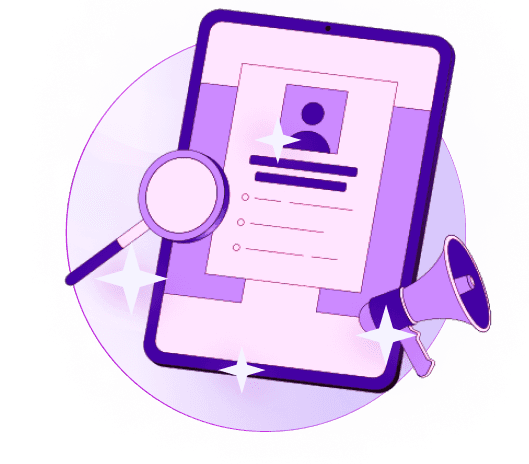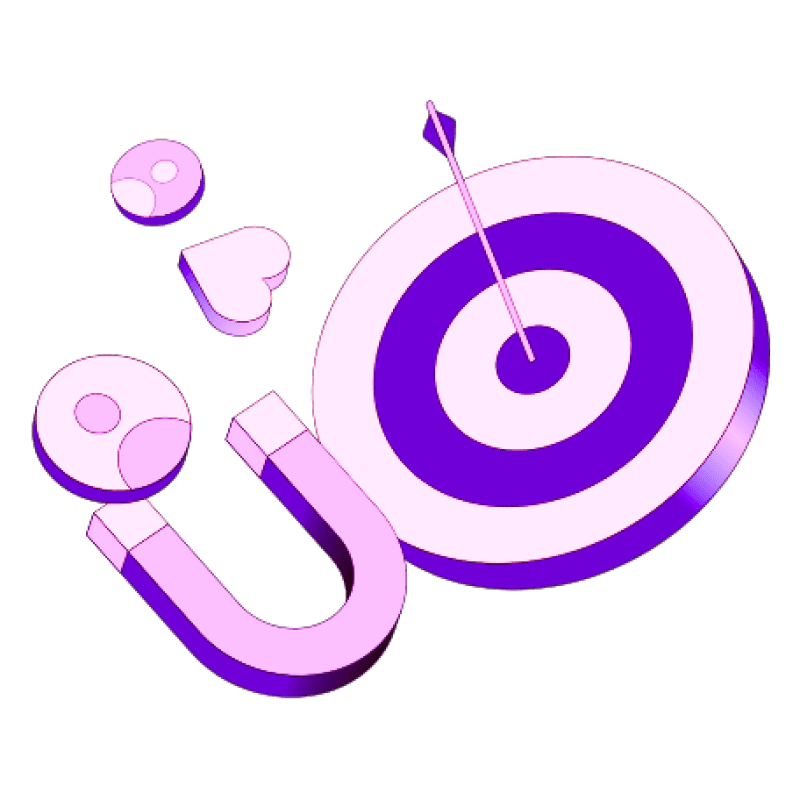Blogs
Articles

7 Outbound Sales Best Practices to Boost Your Prospecting Results
Sales teams generate 55% of leads through outbound sales best practices but only 27% through inbound sales. Outbound strategies are vital to business growth, particularly in enterprise markets, even as inbound marketing gains popularity.
Success in outbound sales depends on finding and connecting with the right decision-makers. These seven proven best practices will help you build a more effective outbound strategy with measurable results. This applies whether you're starting an outbound sales team or improving your current process.
Ready to turn your outbound prospecting into a consistent success story? Let's dive in!
Understand the Role of Outbound Sales in Modern Prospecting
Outbound sales remains the life-blood of business growth strategies. Digital marketing continues to revolutionize sales. You must understand its modern role to maximize your prospecting efforts and drive consistent results.
What outbound sales means today?
The basics of outbound sales haven't changed. Sales representatives still initiate contact with potential customers who haven't shown prior interest. The modern approach is very different from the traditional "spray and pray" tactics of the past.
Modern outbound sales blends proactive outreach with data-driven precision. Sales representatives research deeply to identify pain points before crafting personalized pitches. Teams can target prospects who match their ideal customer profile (ICP). This makes conversations relevant right from the first touch.
The modern outbound toolkit goes beyond phone calls to include:
Cold emails with customized value propositions
Social selling on platforms like LinkedIn
Strategic networking at industry events and trade shows
Technology has revolutionized outbound strategies. Sales teams now use CRM systems, intent data, and AI tools to identify prospects. They look for buying signals and personalize outreach at scale. Recent studies show sellers who use AI to guide their deals increase win rates by 41%.
How outbound differs from inbound
The main difference between outbound and inbound sales lies in who makes the first move. Sellers initiate contact in outbound sales. Potential customers approach businesses based on marketing or content they've seen in inbound sales.
The objectives are also very different. Outbound sales actively sells products or services. Inbound sales educates interested buyers. This creates unique dynamics throughout the sales process:

Inbound leads might show higher initial interest. Outbound gives sales teams complete control over their targets. Companies with clear ideal customer profiles or those selling high-value solutions to specific industries find outbound particularly valuable.
Outbound sales needs a different funnel approach. It begins with a prospecting phase to build targeted lists and find contact information. Each stage needs more active participation from sales representatives compared to inbound processes.
Why outbound still matters
Inbound marketing has grown popular, but outbound sales drives impressive results. Studies reveal outbound accounts for 55% of generated leads compared to just 27% for inbound sales. Research shows 82% of buyers accept meetings with sellers who reach out proactively.
Outbound remains crucial for several reasons:
First, you can target prospects precisely. Instead of creating content for broad audiences, you can contact prospects who likely want your solutions. Better product-market fit reduces churn through precise targeting.
Second, outbound strategies deliver quick results. Inbound approaches take months to build momentum. Outbound sales generates immediate pipeline. Startups and companies entering new markets benefit greatly from this approach.
Third, you get valuable real-time feedback. Prospect responses give immediate insights into message effectiveness. This helps you improve your approach continuously.
Best Practice 1: Define and Refine Your Ideal Customer Profile (ICP)
A precise Ideal Customer Profile (ICP) is the life-blood of outbound prospecting that works. Your best sales pitch won't succeed if you don't know who to target. A well-laid-out ICP helps you spot and rank high-value accounts that are most likely to convert, stay, and build lasting business ties.
Your Ideal Customer Profile should paint an evidence-based picture of companies that would get the most value from what you offer. Think of it as your perfect customer match - one that fits exactly what your company brings to the table.
Use data to build dynamic ICPs
Start building your ICP by looking at your current customer base. Look at your most successful customers first - the ones bringing in the most money, sticking around longest, renewing deals, and growing their usage. You'll want to spot patterns in:
Industry and company size
Revenue and growth trajectory
Technology stack and IT investments
Buying behavior and decision-making process
Getting specific is vital to creating a successful ICP. You can't win by trying to target everyone. Many companies I work with make their ideal customer profiles too broad. To cite an instance, targeting B2B companies with 100 to 700 employees doesn't work - these companies have completely different needs and structures.
Your CRM can help you pull out key company data like:
Firmographics: Industry, company size, revenue, location, and employee count
Technographics: Tools, platforms, or technologies the company uses
Engagement History: Their interactions with your team, product, or service
Segment by industry, role, and pain points
Good segmentation is vital to fine-tune your ICP. Start by grouping potential customers based on key business factors:
Industry: Each industry faces unique challenges your product might solve. Healthcare organizations need data security and compliance, making them ideal targets for cybersecurity solutions.
Company Size: This shapes budget, how decisions get made, and how long sales take. Small businesses might have tight budgets but decide quickly. Large enterprises offer bigger deals but need more detailed sales approaches.
Location: Where a company operates affects what they need. Businesses in areas with high cybercrime rates often spend more on cybersecurity.
Understanding your customers' pain points helps create an ICP that works. These pain points stop them from reaching their goals. Here's how to find them:
Talk to current customers
Watch social media discussions
Read online reviews
Ask sales and support teams
Customer segmentation helps personalize your marketing, service, and sales efforts. This approach can boost customer loyalty and conversions.
On top of that, group customers by their personality, attitude, values, and interests. Understanding their core behavior, including hobbies, lifestyle, social status, and opinions helps create campaigns that connect emotionally.
After defining your ICP, set up a lead scoring and qualification system based on your criteria. This helps you focus on leads that match your ideal customer profile, putting your outbound sales efforts where they'll work best.
Best Practice 2: Personalize Every Outreach Message
Personalization makes outbound sales messages stand out in cluttered inboxes and helps you connect with prospects. Statistics show personalized messages can boost revenue by up to 40% compared to generic ones. Yes, it is true that 84% of consumers want to be treated as people, not numbers.
Craft custom subject lines and intros
Your outbound message's subject line opens the door to engagement. Research shows personalized subject lines can boost open rates by about 20%. Here are ways to create attention-grabbing subject lines:
Add the prospect's name directly in the subject line
Point out a specific pain point their role or industry faces
Highlight a recent achievement or event by their company
"Meeting Request" won't cut it. Try "Quick chat to discuss employee retention at [Company Name]" which shows clear value to the reader. "Hey [Name], question about [pain point/goal]" works well too - it's short, personal, and addresses a likely challenge.
Your message's first few sentences matter just as much. Start strong by speaking to the prospect's needs or interests. Adding their name creates an instant connection. Before reaching out:
Learn about the people and companies you'll contact
Tailor your message based on what you discover
Talk about their role, responsibilities, or achievements
Use relevant case studies or social proof
Case studies and social proof drive outbound sales success. B2B buyers rely heavily on social proof - 79% use it to make decisions. This makes it crucial to securing appointments.
Your case studies should:
Match your prospect's industry, size, and business goals
Show specific benefits and results from similar companies
Focus on problem-solving rather than product features
Sales expert Phil Gerbyshak's team uses "case studies in first contact with customers as an attention grabber, to overcome an objection, and lastly, to ask for references".
Case studies prove your business has helped similar customers achieve results. They ease fears about new solutions and build excitement about possibilities.
In spite of that, too much personalization without relevance can backfire. Mentioning someone's alma mater or favorite stadium snack might seem well-researched but fails if it doesn't connect to their current needs. Put relevance first, then add personal touches to strengthen that connection.
Best Practice 3: Use a Multi-Channel Outbound Strategy
The digital world today demands more than a single-channel approach to outbound sales. Your prospecting potential takes a hit when you limit yourself to one channel. Research shows that multi-channel outbound strategies deliver better results. About 94% of respondents say these strategies work better than traditional single-channel approaches.
Combine cold calls, emails, and social media
A multi-channel strategy creates multiple touchpoints that strengthen your message on different platforms. You can build a cohesive brand presence by reaching out to prospects through various channels. This approach really improves your chances of connecting with decision-makers.
A multi-channel approach gives you several advantages:
Wider reach: You can connect with prospects on their favorite communication channels
Enhanced visibility: You stay top-of-mind by appearing on multiple platforms
Increased credibility: Your brand image remains consistent everywhere
Higher response rates: You get more chances to engage
Cold calling still works amazingly well. 82% of buyers say yes to meetings after cold calls. Technology buyers particularly like phone calls - 54% prefer them. But using only calls can limit your success.
When to use each outbound sales channel
Each channel shines at different stages of prospect engagement. Timing and context play a significant role in choosing the right channel.
Emails make great first contacts. They introduce your company without being pushy. Well-crafted cold emails can achieve 23% open rates. This gives prospects time to review your information when convenient.
Phone calls create direct two-way communication that helps qualify leads and handle objections. Cold calling success rates average 2%, but jump to 8.21% for warm lead follow-ups. About 57% of B2B C-level executives prefer phone calls. This makes calling especially effective for reaching senior decision-makers.
Social media helps build relationships over time. LinkedIn InMail messages between 25-50 words get 65% more responses than regular emails. These platforms let you watch industry conversations, find potential prospects, and interact with their content before reaching out formally.
Best Practice 4: Build a Repeatable Outbound Sales Process
A repeatable outbound sales process separates sporadic sales wins from steady revenue growth. Sales representatives who follow standardized processes consistently perform better than those who don't. Your outbound efforts will produce random results whatever the individual talent without proper structure.
Create scripts and templates
Sales scripts help your team guide conversations with confidence and consistency. These scripts work as flexible frameworks for productive interactions rather than rigid word-for-word formulas. Data from Salesforce shows that top-performing sales teams are 2.3 times more likely to use guided selling techniques like sales scripts compared to underperforming teams.
Effective sales scripts typically include:
Strong opening statements that grab attention
Qualifying questions to uncover needs
Value propositions tailored to pain points
Prepared responses to common objections
Clear calls-to-action
Your outbound process needs different communication templates. Give your team frameworks for initial outreach, follow-ups, and objection handling. These templates should stay dynamic—quarterly reviews help remove ineffective elements while adding winning strategies from top performers.
Your scripts should prioritize the prospect, not your company. Studies show the 90/10 rule—discussing the prospect 90% of the time and only 10% about yourself—significantly improves engagement. On top of that, case studies in your templates can work as powerful attention grabbers and objection handlers.
Document workflows and sequences
A documented sales process builds consistency across your team and reduces ramp-up time for new hires. Sales representatives can focus on execution with clear steps at every stage instead of wondering about their next move.
Your outbound workflow should define:
Lead generation and qualification methods
Specific actions required at each funnel stage
Exit criteria that indicate when to move prospects forward
Standard operating procedures for common scenarios
Outbound sales sequences need careful planning around timing and touchpoints. Most teams achieve the best results with 8-12 touches over 3-4 weeks. These sequences should use multiple channels while varying the messaging across each touchpoint instead of repeating similar content.
Semi-annual reviews of your sequences let you analyze metrics, check A/B test results, and improve your approach. Watch open rates, reply rates, and points where prospects stop moving through your funnel—these show areas needing improvement.
Unlike inbound processes, outbound sequences must consider prospects in earlier stages of their buying experience. This requires more effort to establish credibility and show value before suggesting meetings or demos.
Without doubt, documented processes offer the biggest benefit of scalability. Your standardized approaches ensure consistent performance across the organization as your team grows. Detailed documentation helps you identify ineffective strategies and make evidence-based changes.
Note that effective outbound sequences need balance between structure and personalization. Build frameworks that maintain consistency while allowing customized touchpoints that address specific prospect's needs.
Best Practice 5: Leverage Technology and Automation Tools
Technology has changed outbound sales from a simple numbers game into a precise operation that creates individual-specific experiences at scale. Modern sales teams need the right tools to exceed their targets instead of struggling to meet quotas under mounting pressure.
CRM and email automation
Your Customer Relationship Management (CRM) system works best as the central hub for all prospect information. Manual CRM updates after each conversation waste precious selling time. The answer lies in outbound automation tools that merge with your CRM. These tools log interactions and keep data current automatically.
A good CRM system does more than store contacts—it gives you:
Lead segmentation capabilities to classify prospects based on characteristics and behaviors
Email sequence functionality with personalization options for bulk campaigns
Intent-based prioritization to focus on high-potential opportunities
Live engagement tracking to identify buying signals
Your team breaks free from repetitive tasks with CRM automation. Sales representatives can build relationships and solve problems while automation handles data entry, scheduling, and updates.
Email automation has changed the game for outbound sales teams. Writing cold emails from scratch takes too much time, especially with reply rates between 1-5%. Smart automation tools help you create messages that feel personal yet reach more prospects quickly.
AI tools for personalization and follow-ups
Artificial intelligence has changed every part of prospecting. AI started by handling basic tasks but now makes the entire process better.
Modern AI tools can:
Analyze company news to create relevant outreach
Track prospect activities like webinar attendance or content downloads
Use social profile details to create targeted messages
Find and prioritize accounts using intent data and buying signals
These features become more valuable especially when you have to magnify human efforts. To name just one example, Persana.ai coordinates personalized outreach by finding useful insights and creating custom messages based on successful workflows.
Research automation gives sales teams a big advantage. AI tools gather and analyze data in minutes instead of hours spent investigating each prospect. They enrich lead information automatically. Messages feel natural yet reach more people efficiently.
These tools help teams maintain personal communication through email, social media, and other channels. The result shows 10% higher open rates and twice the reply rates compared to generic messages.
Sales still needs human connection—building trust, understanding needs, and closing deals require people skills. But these tools handle routine tasks so your team can focus on what matters most.
Best Practice 6: Track Key Metrics to Measure Success
Strategic outbound sales depends on measuring performance rather than relying on guesswork. The best sales teams know exactly what works by tracking specific metrics. These metrics show where their outbound process needs improvement.
Lead conversion rate
Your team's effectiveness in turning outreach into opportunities shows in the lead conversion rate. This vital number represents how many of your outreach efforts lead to scheduled meetings or qualified opportunities. Apollo users should track the interest rate from monthly emails. The best teams want 1-2% of new prospects to become Marketing Qualified Leads (MQLs).
The formula to work out your outbound conversion rate:
Conversion Rate = (Number of Converted Leads ÷ Total Leads) × 100
Each outbound channel needs separate tracking of conversion rates. Look at cold calls, emails, and social outreach to find what works best. Outbound marketing averages a 5% conversion rate. Small improvements can boost your revenue.
Call-to-close ratio
The call-to-close ratio shows how many leads become paying customers. This number reveals your lead quality and your team's skill at closing deals.
Here's how to calculate this core metric:
Closing Ratio = (Number of Closed Deals ÷ Total Opportunities) × 100
Top SDRs achieve demo-to-close ratios of 15-20%. SaaS companies average a 22% opportunity-to-conversion rate. The standard framework looks like this:
15-20%: Average performance
20-30%: Good performance
30%+: Excellent performance
Different industries see different ratios. Your closing ratio helps spot areas in your sales process that need work.
Sales cycle time
Sales cycle time measures how long prospects take to buy. B2B sales cycles take 2.1 months on average. SaaS companies need about 2.5 months. Company size changes this timeline:
Small businesses (1-10 employees): 38 days
Mid-market (201-500 employees): 95 days
Enterprise (10,000+ employees): 185 days
This metric adds context to other pipeline numbers and helps forecast accurately. You can spot which stages take longest and make targeted improvements. These might include extra training or better processes.
These three key metrics give you clear insights into your outbound strategy. You can make informed data-driven decisions and keep improving your results.
Best Practice 7: Stay Adaptable and Continuously Improve
The best outbound strategies need constant refinement to stay relevant. Your success in outbound sales depends on how well you adapt to changing market conditions and buyer behaviors.
A/B test your messaging
A/B testing helps you make analytical decisions instead of relying on gut feelings to improve your outbound campaigns. You can compare two versions of messaging by changing one variable to see which works better.
Here's how to conduct A/B tests for outbound messaging:
Test one variable at a time – subject lines, email design, call-to-action placement, or tone
Use test segments large enough for statistical significance
Define clear goals before testing (open rates, response rates, or conversions)
Track why deals closed or fell through to spot patterns
Subject lines can boost open rates by about 20%, while personalization can substantially improve response rates. These elements make the biggest difference in your campaigns. Take time to analyze which version performs better across your target metrics.
Update ICPs and playbooks regularly
Your Ideal Customer Profile and sales playbooks are the foundations of your business growth and market changes. Top-performing teams know these core elements need systematic updates.
Review your ICP every quarter or twice a year to keep it relevant. Put these feedback systems in place:
Regular call reviews: Weekly sessions to analyze what worked and what didn't
Win/loss analysis: Notes on why deals succeeded or failed
Rep-to-manager feedback: Ways to report daily challenges
Your sales playbook should evolve with your business. Regular checks of performance metrics—like connect rates, meeting conversion rates, and time-to-next-step—show which strategies work best and which need tweaking.
Note that creating a playbook differs from putting it into action. Test new approaches on a smaller scale before rolling them out to your entire team. Your refined strategies will soon deliver predictable results that accelerate your outbound sales growth.
Conclusion
Outbound sales remains a powerful strategy to grow businesses when teams implement it correctly. This piece shows how the right approach can revolutionize your prospecting efforts and deliver measurable results. Your success depends on knowing your target audience through well-defined ICPs and personalizing each interaction to address their specific pain points.
Generic, high-volume outreach no longer works. Successful teams blend multiple channels with evidence-based personalization instead of bombarding prospects with standardized messages. They achieve much higher response rates and build stronger relationships with potential customers.
Technology plays a vital role in this revolution. Your team can improve results by a lot using tools from Persana.ai that automate repetitive tasks while enhancing personalization at scale.
Technology alone won't guarantee success. The best outbound strategies need continuous measurement and refinement. Your team can adapt to changing market conditions and buyer behaviors through regular A/B testing, metric tracking, and process improvements.
These seven best practices function as an integrated system. Each practice reinforces the others and creates an all-encompassing approach that makes outbound sales consistently successful rather than unpredictable. We suggest implementing these practices as part of a cohesive strategy rather than isolated tactics.
Note that outbound sales excellence comes from constant refinement. Teams that consistently test, measure, and improve end up winning more deals and stimulating revenue growth.
Key Takeaways
These seven proven outbound sales practices will transform your prospecting from hit-or-miss to consistently successful, helping you generate more qualified leads and close more deals.
• Define precise ICPs using data: Analyze your best customers to create specific ideal customer profiles—companies with targeted ICPs see 15% higher sales productivity and 11% better conversion rates.
• Personalize every message: Customize subject lines and intros for each prospect—personalized outreach can improve revenue by 40% and increase open rates by 20%.
• Use multi-channel strategies: Combine cold calls, emails, and social media touchpoints—94% of sales teams report multi-channel approaches are more effective than single-channel tactics.
• Build repeatable processes: Create standardized scripts, templates, and workflows—high-performing teams are 2.3x more likely to use guided selling techniques than underperforming ones.
• Leverage automation tools: Use CRM systems and AI for personalization at scale—automated tools free up time for relationship building while maintaining consistent outreach quality.
• Track key metrics religiously: Monitor lead conversion rates, call-to-close ratios, and sales cycle time—data-driven teams consistently outperform those relying on guesswork alone.

Create Your Free Persana Account Today
Join 5000+ GTM leaders who are using Persana for their outbound needs.
How Persana increases your sales results
One of the most effective ways to ensure sales cycle consistency is by using AI-driven automation. A solution like Persana, and its AI SDR - Nia, helps you streamline significant parts of your sales process, including prospecting, outreach personalization, and follow-up.



